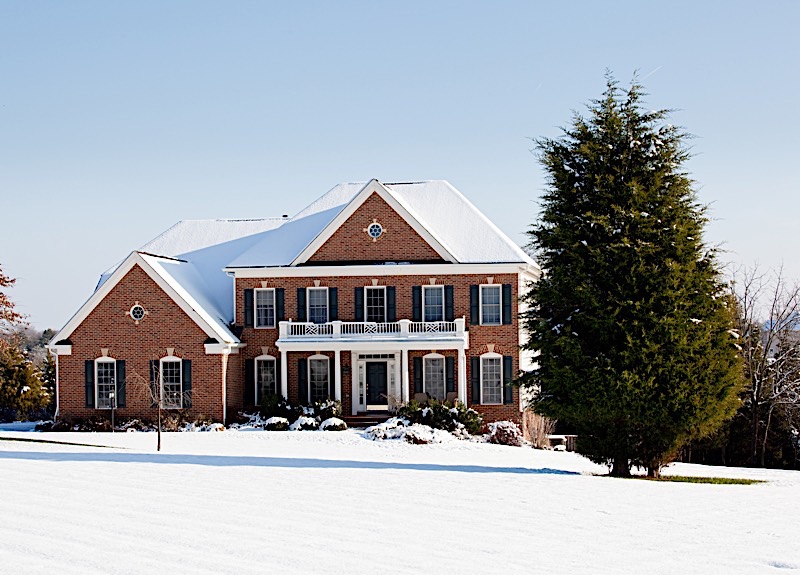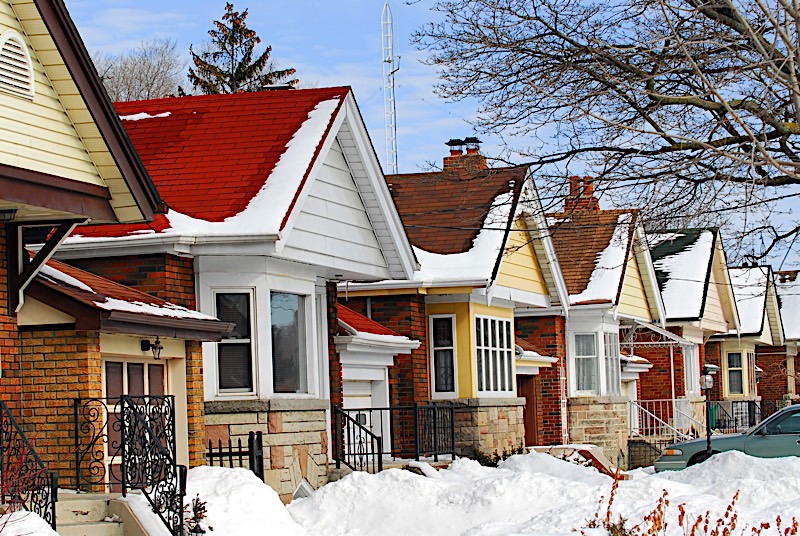6 Things You Should Know About Winter Real Estate In 2019
By Than Merrill
Winter real estate market trends have become synonymous with tempered expectations, and for good reason: it is cold outside. If for nothing else, home buying and selling activity has been known to cool off with the weather. It is not uncommon for frigid temperatures to prevent people from going outside in most parts of the country, let alone pursue whichever real estate endeavors they have in mind. That said, this may be the winter we see the housing industry depart from typical winter real estate market trends.
With the first day of winter no more than a few weeks away, there isn’t a better time to predict what today’s investors may be able to expect in the next few months. Those that can accurately anticipate the upcoming winter real estate market trends could find themselves with a significant advantage over the competition. If that sounds like something you could get behind, take a look at what many believe to be the three most likely winter real estate trends to unfold sooner rather than later.
6 Winter Real Estate Market Trends
There’s absolutely no reason for the winter season to slow down your real estate efforts. In fact, today’s competitive marketplace has seen to it that every season has important trends transpiring year round. Here are six winter real estate trends to keep an eye on this year:
- Fewer Homes On The Market
- Consistent Carryover
- Less Competition
- More Motivated Sellers
- Higher Interest Rates
- Higher Prices
[ Thinking about investing in real estate? Learn how to get started by registering to attend a FREE real estate class offered in your area. ]

1. Fewer Homes On The Market
There’s no doubt about it: the winter season isn’t nearly as busy as its spring and summer counterparts. Summer and spring have become synonymous with the best times to sell, so more owners are inclined to list their properties when the weather heats up. As a result, there’s an inherent drop in activity when the weather cools down. Some parts of the country can’t support a very active market year round, so it’s only natural sales will drop with the temperatures.
2. Expect Some Carryover
Industry professionals and pundits alike are convinced the upcoming winter months will stray from what we have come to expect at this time of the year. That’s not to say this winter will be busier than summer, or even fall, but rather that the next few months will be busier than they have been in the past.
I fully expect the winter real estate market to be relatively busy for one simple reason: carry-over. You see, supply has been unable to keep up with demand for the better part of 2017. As a result, there are more people actively participating in the housing market at this time of the year than normal. It is safe to assume prospective buyers that weren’t able to find a home over the summer and fall months are still looking. So before you close up for winter, be sure to account for the carry-over many are expecting this year; you may find this winter to be more lucrative than those in the past.
3. Fewer Competitive Buyers
Summer has become synonymous with the most active selling season because its the time when most people are looking to buy. Consequently, winter will inherently exercise a lower buyer participation rate. Again, the weather — and the holidays — prevent winter real estate trends from really taking off. As a result, its common to see fewer serous buyers in the colder months. It is worth noting, however, that 2019 may see more buyers than usual, as competition may have prevented every prospective buyer from following though with a purchase. Those who weren’t able to buy in the summer may still be looking well into winter.
4. Increased Number Of Motivated Sellers
Any homes that are still on the market in winter are most likely leftover from the summer and fall. While sellers do place homes for sale at this time of the year, it’s more likely that the home simply hasn’t sold yet. For whatever reason, the property hasn’t managed to close. If that’s the case, holdover sellers that failed to sell in previous months are most likely becoming more desperate. After all, the longer the home sits on the market, the more it’s costing the owner. Therefore, it’s reasonable to assume anyone selling a home in the winter is more motivated than they were in the months before.
5. Interest Rate Should Rise
The powers that be (the Federal Reserve) have already raised interest rates twice in 2017, pushing their benchmark up ever so slightly. Today, the Fed’s key interest rate rests between 1% and 1.25%, but that doesn’t mean it’s expected to last. Following three meetings that resulted in, well, nothing, the Fed hasn’t increased rates like they said they would, but I digress. The winter looks like it could usher in the change many have been expecting: the impending increase in interest rates.
Expect the Fed to increase interest rates sooner rather than later. That means winter real estate market trends could be in for a surprise. In the event rates are increased, no matter how menial, the cost of homeownership could jump. And while the increase isn’t expected to be much, it’s entirely possible that prospective buyers could act sooner or forego the process altogether. There’s really no way in telling if the Fed will actually increase rates, but if they do, expect it to have at least s small impact on the way winter real estate trends transpire this year and early into 2018.
6. Prices Will Continue To Rise
Due largely, in part, to the lack of available inventory and increasing demand, we are currently in a seller’s market. As a result, prices have continued to trend upwards since the recovery initiated. It’s also worth noting that, while builders are in the process of bringing new homes to the market, the inventory won’t be introduced this winter. It is entirely possible the new homes will help prices in the future, but for now prices are expected to inch higher because of the lack of available options made to buyers.
According to Zillow, the median home value in the United States is currently somewhere in the neighborhood of $203,400. That price represents a 6.5% increase from last year, and the experts at Zillow expect the increases to continue. Median home values are expected to carry on the trend, increasing an additional 3% in the next 12 months. And while the winter months may be slower than their warmer counterparts, there is nothing to suggest the increases won’t start happening incrementally between now and the early part of 2018.
Summary
Winter real estate market trends are expected to take a bit of a turn this year. Whereas the colder months have become ubiquitous with less activity and lower prices, the next few months are shaping up to be anything but. It is not fair to assume the time between now and spring will rival that of summer, but there’s no reason to think the next few months won’t be more active than they have been in the past. That said, now is not the time for investors to call it in and rest on their laurels, but rather to use this opportunity to start 2018 off on the right foot.
Key Takeaways
- This winter is expected to benefit from the carry-over of a busy summer and fall.
- Interest rates are expected to increase for the third time this year, albeit moderately.
- Supply and demand will continue to drive prices up for the foreseeable future.